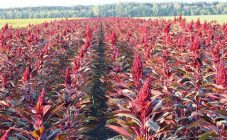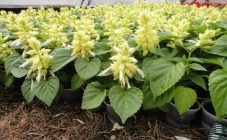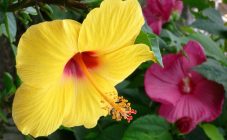Lupine has been known for over 4,000 years. Beautiful candles of flowers grow everywhere, regardless of soil fertility and aridity of the region. There are about 200 species of wild lupine, but there are few cultivated forms. The high protein plant is planted as a forage crop. But parts of some species contain poisonous alkaloids.
Poisonous or not lupine depends on its type and method of use, alkaloid-containing species are harmful if swallowed, including by pets or children, but in large quantities. In order to get poisoned, you need to eat a handful of seeds or three inflorescences. The smell of lupines is not dangerous.
Lupine is a herbaceous plant with a long inflorescence that takes up half the stem, comes from the legume family. Lupins are annual and perennial in the form of shrubs, dwarf shrubs and dwarf shrubs.
The meaning of the lupine flower is translated as a wolf, which, according to one of the legends, means the similarity of the flower with the character of a wolf in its ability to grow in any natural conditions and to capture territories. Another ancient legend tells of the preparation of potions from a plant that turns a person into a wolf, and this explains its name.
The flower began to be called wolf beans due to the fact that its pods, unlike edible beans, contain seeds with toxic substances in the composition.
Also, flowers similar to lupins, but not lupins, are: delphinium, goat's rue, eremurus. The purpose of planting lupins by most gardeners is decorativeness, conical plants planted in the garden create beautiful border backgrounds, upper tiers and centers of flower beds.
Lupine is a plant that propagates well by seeds and vegetatively.
Plant characteristic
The root is pivotal, penetrating deep into the soil up to 2.5 m. The bulk of the roots is in the arable layer of the earth. A plant of the legume family, like other species, quickly forms nodules on the root, thanks to the nitrogen-retaining bacteria on it.
The stem is erect, in different species from 50 to 120 cm in height. White lupines grow the highest. In white and narrow-leaved species, the stem grows woody over time, while in yellow it remains herbaceous.
Leaves are complex, rounded, dissected, consisting of 5-10 cut leaves. In the blue species, the finger-shaped leaves in the leaf composition are narrower than in the yellow and white ones. Leaves are smooth or slightly pubescent on the top and pubescent on the underside. The color of the leaves is from light green to dark green.
Flowers - moth type. Lupine flowers are collected in dense racemose inflorescences located on the tops of the central and lateral shoots. The arrangement of flowers is alternate or symmetrical. The color is varied: blue, purple, pink, white, yellow.
The fruit is a bean. The beans have a different color and degree of pubescence.
Seeds - depending on the type of plant, reniform or flattened. The color is white, whitish-pink and gray with a pattern.
Kinds
Consider groups of lupines by geographic origin and their description.
Mediterranean group:
- yellow;
- white;
- blue, narrow-leaved;
- ordinary garden, coarse-haired;
- Sicilian, Egyptian, Roman, Neapolitan.
American group:
- multi-leaved;
- fickle;
- tree-like;
- shaggy;
- annual small-seeded.
Garden group Russell hybrids
J. Russell is an English gardener-breeder who carried out work on obtaining cultivated species of lupine and achieved the greatest results. The results of crossing a multileaf and tree species were presented in 1937. Bored with Russell, the blue color of natural lupines received the most beautiful and unusual colors in his hybrids: violet-yellow, pink, pink-purple, red-yellow, orange, salmon, blue-white, ruby, mixtures of colors.
Some popular varieties: Schlossfrau, Edelknabe, Roseus, Albus, Rubinkyonis, Kastellan, Minaret, Lulu.
Agrotechnics
Lupine is an unpretentious plant that does not require growing by seedlings. Flowers are planted by direct sowing of dry seeds in open ground in May. You can use your own seeds, obtained from the plant in the previous season, or purchased. Purchased seeds, which give flowers of shades unusual for natural lupine, in the second year of flowering turn into the dominant purple or blue shades of the color of ordinary lupine. Therefore, to obtain contrasting shades, lupines are planted every year from purchased seeds.
Lupine seeds are sown at a distance of 40-50 cm. Plants with purple, blue and white colors grow better and less whimsical than new selection varieties with bright colors, which are more capricious, especially in germinating seeds.
A perennial can bloom in the first year of cultivation, at the end of summer. It is recommended to prune the first emerging inflorescences for better root development. You can sow lupines in June, but not later, then flowering will begin next year. A later planting is not recommended, because the plant must have time to develop in order to survive the first winter well.
Lupine seeds are planted in autumn, in October. Seeds are covered to a depth of about 2 cm, the planting is mulched with peat.
The landing site is chosen sunny and permanent, given that lupins do not tolerate transplanting well. It is possible to cut and plant annual varieties or young perennials that have reached no more than 15 cm in height and formed no more than two true leaves. For better adaptation in a new place, the sprouts are shaded, covering for several days with dark plastic pots, with holes for air access. Even young plants can have a long root, damage to which during transplantation will lead to the death of the perennial.
Heavy soils for growing flowers are loosened by adding compost or rotted sawdust. Lupine is able to independently deoxidize the soil, but when planting in highly acidic soil, ash or dolomite flour is added. For planting in unsuitable areas, use a special soil mixture consisting of a coke substrate, fertile soil and sand.
The lupine flower blooms from June to July, but is able to bloom again during the season. To do this, after the first flowering, the inflorescences and pods with seeds are cut off.
Lupine of the legume family can multiply by self-seeding, therefore, in order to control its amount, do not allow the pod to crack independently. It is better to open the pod to obtain seeds when cut, when it turns yellow.
The peculiarity of the structure of the root, in contrast to the similarly structured delphinium flower, allows the lupine to independently extract all the necessary elements from the soil, so it does not need additional feeding.In particular, it is undesirable to use manure, which adversely affects flowering, forming a large amount of green mass of the plant.
After two years of flowering, lupine bushes are spudded, tall species are tied up.
Perennial lupine in Russian latitudes, especially due to cold winters and temperature fluctuations, is prone to rapid degeneration, accumulation of diseases, so it needs to be sown periodically. It is necessary to completely change the planting of perennial flowers after 4-5 years of cultivation.
Diseases and pests
The plant can be susceptible to diseases caused by viruses, bacteria or fungi. When signs of diseases such as leaf spot and rustiness of leaves, bacteriosis appear, the plants are sprayed with a suspension of colloidal sulfur. When affected by viral diseases, such as mosaic, browning, the leaves of the plant change color, become covered with necrotic spots, and curl. With such lesions, the flower and all plant residues are destroyed; it is best to burn them, but not to use them in composters and as green fertilizers. A diseased plant is dangerous by re-infection of healthy crops in the garden.
From harmful insects, the plant is sprayed before flowering, when the flower has just formed a green cone. One of the pests of the garden are aphids, in particular they are dangerous because they are carriers of pathogens of plant diseases. In the fight against aphids, spraying with soap and tobacco solutions, insecticides is used.
The ants feed on the sticky mass secreted by the aphids and carry it over the plants.
The main pests of the family of all legumes, in view of their structure, is the nodule weevil. To prevent the appearance of a pest, it is important to observe crop rotation, not to plant related crops nearby and alternately in the same place. After cultivation, the soil is dug deeply.
Lupine for rabbits
Lupine is a plant food for rabbits. The origin of the plant depends on whether the rabbit can be given lupine. Only forage-free plant species are suitable for forage. Lupine multifoliate (lat.Lupinus polyphyllus) contains alkaloids, which cause poisoning in rabbits.
Sweet feed lupine is used as feed and raw material for the manufacture of silage due to its high content of nutrients. But the grass of even alkaloid-free lupins cannot form a complete diet of animals, but can only be used as part of a mixture with other plants. In small quantities, lupine grass can be fed to rabbits and females while feeding their offspring.
Interesting Facts
Gardeners know what lupins are like beautiful decorative flowers, but the plant has other distinctive properties:
- The green mass and the root of the plant are excellent organic fertilizers. Lupine can be used as green manure to heal the site. Plant species containing alkaloids have a negative effect on the development of scab and rot, and suppress nematodes. The bacteria contained in the root nodules are able to collect and enrich the soil with nitrogen, which the plant absorbs from the air. The perennial also improves the soil by processing nutrients into readily available forms for other plants, raises beneficial compounds to the upper parts of the soil, and decomposes quickly. Siderat can be cut at the green stage or allowed to bloom. The cut green mass is used as mulch, liquid infusion for plant nutrition or composting.
- Multifoliate lupine, containing alkaloids in the composition, is planted around the perimeter of the site to scare away rodents.
- Honey plants or not lupines can be considered by the absence of nectar in them, but the presence of a large amount of pollen. The plant is still not included in the group of leading melliferous plants, which is the difference between lupine and goat's rue. The goat's rue is similar in appearance to lupine, but it is capable of producing nectar and is considered an excellent honey plant.
- Lupine seeds are edible by humans and are also used in fish feeding.
- The plant and its parts are used in pharmacology, veterinary medicine, cooking and cosmetology.
Most gardeners know what lupines are, they are loved for their bright candle bouquets. For the way lupins look, they are grown in flower beds and cut to put bouquets in the house. A plant can either fill the area uncontrollably, like a weed, or increase soil fertility.



















